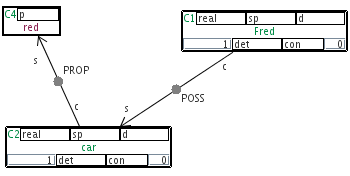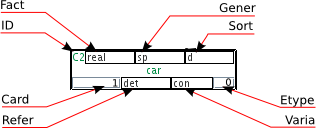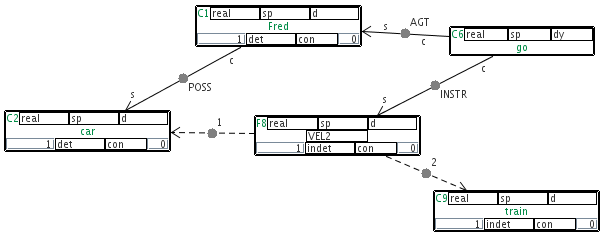Concepts and Relations
Let's start with a simple sentence:
Fred's car is red.
Our goal is to produce this annotation:

We can see three nodes in this graph. They are identified by their IDs: C1, C2, and C4.
Every node represents a concept. C1 represents the person called Fred. C2 represents his
car, and C4 represents the notion of being red.
Concepts
Every concept has a bunch of attributes:

These attributes are described in layer-attributes section.
But not every node has every attribute. It depends on the sort of the concept. For instance, the property red has no other attribute than the sort.
Relations
The concepts in the example are connected by edges. These edges represent relations, e.g. Fred is connected with his car by a POSS relation. By definition, the edge goes from the owner to the owned object. If we created an edge with reverse direction, it would mean that the car possesses Fred.
Functions
Beside of Concepts and Relations, the last part of MultiNet lies in Functions as in this example:
Fred goes by his car, or by train.
The function VEL2 generates a concept representing disjunction of its arguments. Here concept F8 is either C2 (car), or C9 (train). None of C2 and C9 is an appropriate candidate to connect to go with the INSTR relation. We need a function to create this content representation.
by Intelligent Information and Communication Systems Department of FernUniversität in Hagen.

